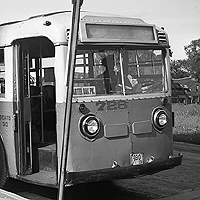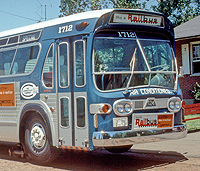These plates are used on buses which transport passengers for hire. They can be used on vans to motorcoaches.
Buses used Commercial plates for 1914 through 1916. Public Service plates were used on buses starting in 1917 (along with their use on individual-fare for-hire cars).
The Bus type started in 1922 as “Jitney”. They had the reverse colors of passenger plates with a J- prefix. Sometime in the 1930s the type was changed to “Bus” which is used to today.
“Temporary Jitney” plates are known for the 1920s, with a TJ- prefix.
“General Distinguishing Number” Bus plates were used starting sometime in the 1950s. These look the same as regular bus plates (including the “Bus” caption), but have a letter prefix. See section below.
As of 2016 Bus plates are now in the generic AB-12345 format.
Click the photo to see this type in use.
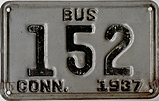 1937
1937
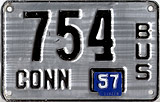 1957
1957
This plate was used in ’56 and ’57.
The shiny background didn’t scan too well.
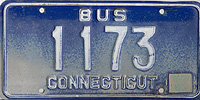 1965
1965
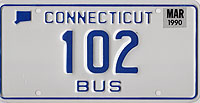 1990
1990
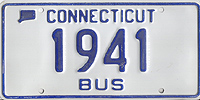 1990s Map Base
1990s Map Base
 1999
1999
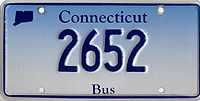 ca. 2000s
ca. 2000s
 ca. 2010, made with Avery sheeting
ca. 2010, made with Avery sheeting
BUS – GENERAL DISTINGUISHING NUMBER
Click the photo to see this type in use.
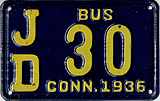 1936 General Distinguishing Number Bus.
1936 General Distinguishing Number Bus.
The “Bus” caption was added in the early 1930s, but the “J” prefix for “Jitney” remained.
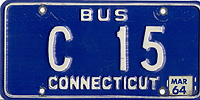 1964 General Distinguishing Number Bus.
1964 General Distinguishing Number Bus.
The ‘C’ indicates this would be the third plate under this registration.
